TechRadar Verdict
Out of the box, the C81 QLED is probably only a three-star TV. TCL’s enthusiasm for showing off the admittedly impressive brightness and colour delivered by its QLED LCD panel gets the better of it, leading to some significant flaws. However, a sensibly calibrated C81 QLED delivers an above-par all-round performance, backed up by well-integrated Android TV smarts.
Pros
- +
Colourful pictures for the money
- +
Good value
- +
Powerful, forward-facing sound system
Cons
- -
Initial presets cause brightness and colour flaws
- -
Backlight clouding
- -
Limited viewing angles
Why you can trust TechRadar
The TCL C81 QLED is a mid-range 4K TV sold at a borderline budget price – but there’s nothing overtly budget about its design. Its frame looks shiny and metallic, and the blue felt-covered soundbar hanging off the bottom edge definitely isn’t something you’d usually see on a keenly priced TV.
Connectivity is solid. The TV comes with three HDMIs, where premium TVs would come with four. There’s no support for next-gen gaming features, but that’s fair enough for a £849 / AU$1,795 price tag.
The C81 QLED’s screen specifications are an interesting mix. It’s an edge-lit LCD TV rather than a direct-lit one, but it uses Quantum Dots to make its colours – and, impressively, it supports all four of the main HDR formats: HDR10, HLG, Dolby Vision and HDR10+.
The soundbar, meanwhile, isn’t just there for show. It’s backed up by a woofer on the set’s rear, and does a respectable job of playing movie soundtracks, even Dolby Atmos ones.
Picture quality out of the box is mixed. Pictures look dynamic and exceptionally colourful, but the colour can easily turn cartoonish with HDR10, and there’s a fair bit of clouding in dark scenes from the edge LED backlight. You’ll have to tinker somewhat to improve matters, and this may result in the loss of some of the TV’s initially attractive vibrancy. Nevertheless, you can still end up with pictures that are more engaging than the norm for this price point.
- Check out the best TCL TVs overall
Price and availability
- The C815 range is available in 55-, 65- and 75-inch sizes
- The 65-inch model costs £849 / AU$1,795 / 1,199 Euros
- The C815 range is widely available in Europe and Australia, but not in the US
While TCL is a well-established TV brand in the US, it hasn’t quite achieved the same status elsewhere. Not least because it tends to release less well-specified TVs outside of the US.
However, the C81 QLED is one of TCL’s most promising models to date. Despite ticking the affordability box at just £849 / AU$1,999 / 1,199 Euros for a 65-inch screen, it’s packed with promising picture, sound and smart features.
The 55-inch 55C815K is available for £649 / AU$1295 / 799,99 Euros at the time of writing, while the 75-inch 75C815K is available for £1,299 / AU$1,995 / 1,449 Euros.
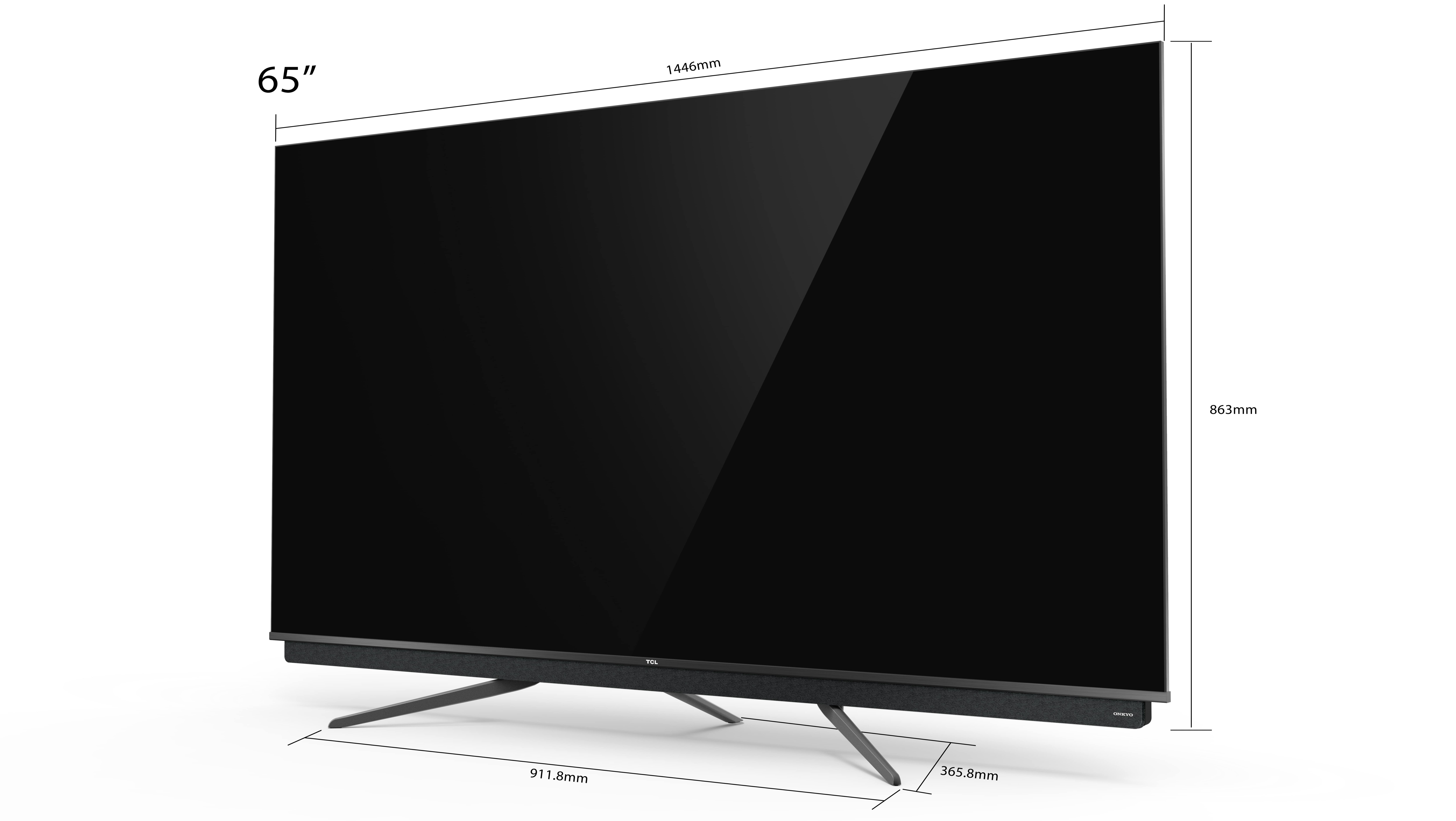
Design
- Super-slim outer edge
- Unusual triple-foot table mount
- Built-in soundbar
While the TCL C81 QLED isn’t the most attractive TV of 2020, it certainly isn’t ugly. The frame around the screen is narrow, and the outer edges of its rear are exceptionally slim for an LED TV. A result, no doubt, of the TV using edge-based rather than direct LED lighting (where the lights sit right behind the screen).
Uniquely, the C81 QLED’s considerable acreage of screen is perched on not two, but three legs. Two face forward diagonally, and one faces straight back. There’s nothing particularly elegant about the stand, but it delivers impressive stability and gives the design an airy, light look.
Build quality is decent. There’s a reasonably heavy feel to the TV, and its small bezel and feet avoid appearing plasticky and cheap.
The most striking aspect of the C81 QLED’s design is the soundbar that hangs off its bottom edge. This sports a distinctive but tasteful blue felt cover; it hangs down about an inch and a half from the screen’s bottom edge, and runs for around three quarters of the screen’s width. As well as looking pleasant, this soundbar scores an instant advantage over many rival sound systems by providing forward-facing drivers.
It’s backed up by a promisingly large woofer on the set’s rear – and both this woofer and the soundbar wear Onkyo badges, reminding us that they’re designed in conjunction with the acclaimed Japanese audio brand.
Connections are about what you’d expect to be included on a £849 65-inch TV. They include three HDMIs rather than the four typically found on premium TVs, with none supporting HDMI 2.1 features. So there’s only ARC audio passthrough support rather than the eARC required for passing lossless Dolby Atmos output to connected soundbars or AV receivers. And there’s no support for next-gen gaming features at variable refresh rates, 4K at 120Hz and automatic low latency mode switching. But it wouldn’t be fair to expect such inclusions at this price.
There are a couple of USB ports, plus a physical headphone jack and an optical digital output.
One last design feature of note is the provision of two remote controls with the C81 QLED. One is a long, slim, heavily buttoned affair, while the other is a smaller, more metallic alternative with far fewer buttons and Bluetooth rather than IR support. The latter boasts a handy Google Assistant voice-recognition button.
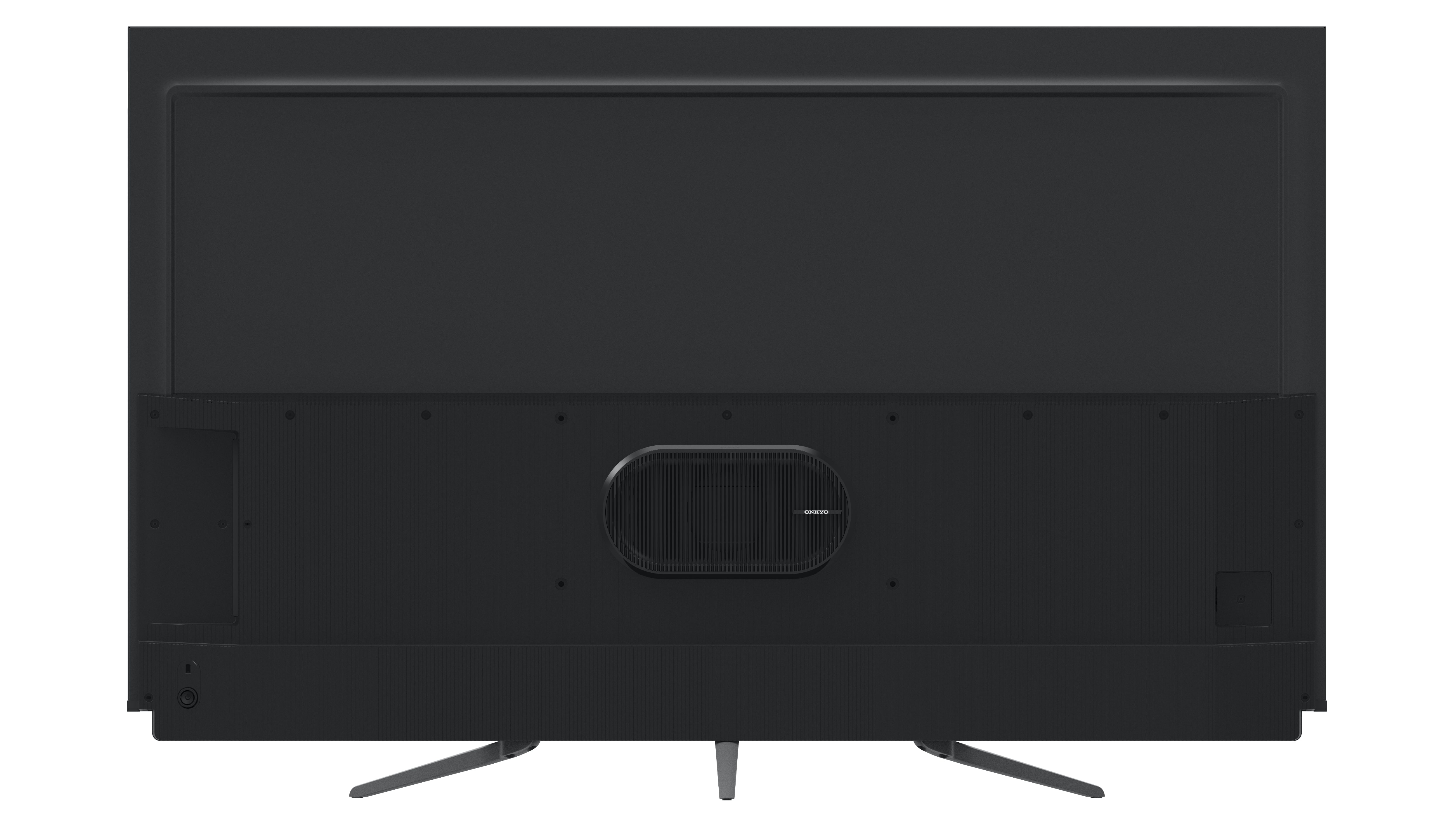
Smart TV (Android 9.0)
- Apps galore
- Android is backed up by Freeview Play support
- Currently no Apple AirPlay or Apple TV app support
TCL has sensibly moved away from its previous, rather basic, home-grown European smart TV interface to Android TV. And the result is a pretty decent implementation for such an affordable set. The menus load quickly, and running Android 9.0 doesn’t lead to serious sluggishness in other parts of the TV’s menus.
I also like the way TCL has integrated the TV’s set-up menus alongside the Android TV interface. It’s definitely more straightforward to negotiate than the Android implementation of Sony’s latest TVs.
The C81 QLED supports Google Chromecast out of the box. Plus, as noted earlier, there’s also support for Google Assistant voice recognition, complete with a far-field mic built into the screen so you can issue spoken instructions to your TV without the need for a remote.
Freeview Play brings all the key UK catch-up apps, while Android now carries what most TV viewers will be looking for – Netflix, Amazon Prime Video, YouTube and so on. All with 4K and HDR support.
The only notable absentee in app terms is Apple TV (although Sony is the only Android TV-using brand to offer that so far).
The HDR app support is particularly fulsome on the C81 QLED, thanks to its support of the HDR10+ and Dolby Vision HDR formats alongside the more standard HDR10 and HLG formats. So no matter what HDR format a particular streaming service uses, the C81 QLED will be able to take full advantage of it.
There remain a few general problems with Android TV. The way it takes over the whole screen with its home menu feels a bit dated; it isn’t especially easy to customise; and it isn’t as good at offering up tailored results to searches for questions such as ‘what should I watch’.
There’s no doubting the sheer volume of content Android brings with it, however.
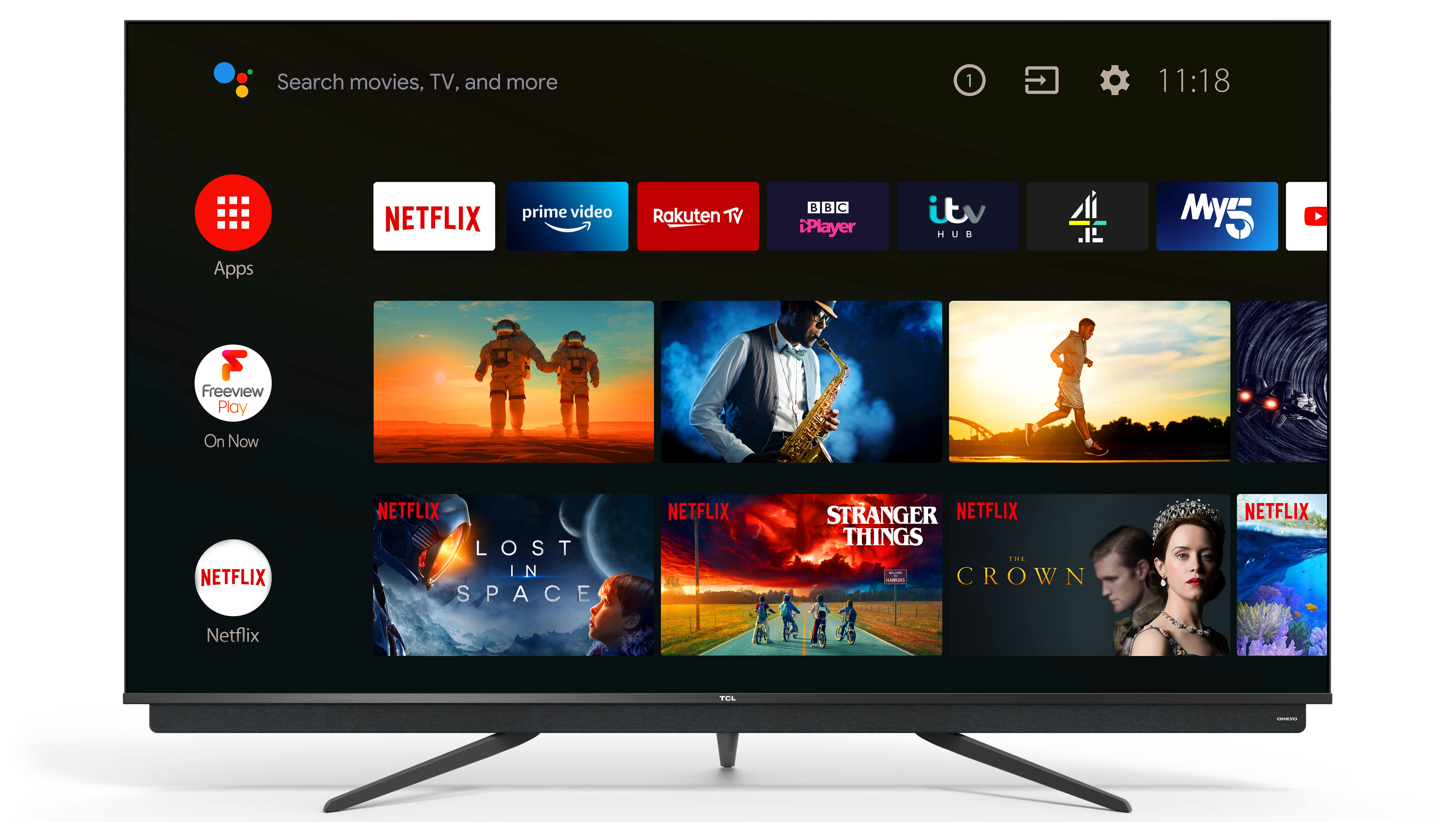
Picture quality
- Edge-lit VA panel design
- QLED technology for richer colours
- Native 4K panel
The C81 QLED’s key screen specifications make it difficult to predict how it will perform. Its edge-based lighting doesn’t bode well for dark scene playback on a TV of this size, especially with HDR sources. Nor is its measured peak brightness of 539 nits quite high enough to point to a particularly punchy HDR experience.
On the other hand, its QLED system promises richer colours than regular filter-based LCD TVs, and its VA LCD panel should give better contrast than the IPS alternative.
What all this translates to is one of the strangest out-of-the-box picture performances I’ve seen – even if most of the initial foibles can be circumvented with a bit of judicious tweaking.
The main area of ‘drama’ concerns the C81 QLED’s light management – especially with HDR sources. The first issue here is that while the TV produces respectable black levels for such an affordable and large edge-lit LED TV, this can be disguised by some pretty heavy backlight clouding.
Screen sizes: 55, 65 and 75 inches | Tuner: Freeview HD | 8K: No | HDR: Yes | Panel technology: Edge-lit LCD | Smart TV: Yes, Android TV 9.0 | Curved: No | Dimensions: 1446(w) x 862(h) x 67(d)mm | Weight: 26kg | 3D: No | Inputs: 3xHDMI (all v2.0)) 2xUSB, RF input, optical digital audio, CI slot, headphone output, Ethernet
So, in seriously dark scenes, HDR in particular, where you should see fairly uniform black colours, you instead see a number of irregularly shaped blotches that look brighter than the rest of the image. Overall, these affect probably more than 50% of the entire screen area, including some fairly central spots, so they’re difficult to ignore.
Most edge-lit LCD TVs will suffer such issues, of course. But it’s particularly noticeable on the C81 QLED – almost like looking through the surface of a sun-dappled pond at its worst.
Unfortunately, options for reducing its impact are limited. The Micro Dimming feature that analyses the image on a fine enough level to deliver enhanced local contrast didn’t make much difference. The dynamic contrast feature that adjusts contrast automatically in response to image content improved the clouding a touch, but introduced lots of brightness instability.
Just reducing brightness didn’t really impact the clouding much, but it upset the image’s balance.
The most effective solution was to activate the Clear Motion feature, which introduces black frame insertion to make motion look more cinematic. However, the main reason this works is because it removes substantial brightness from the picture – enough in itself to deter many people from using it. But it also loses some detail in dark areas, and can cause some flickering. Plus, it isn’t even available if you’re watching a source that’s mastered in Dolby Vision.
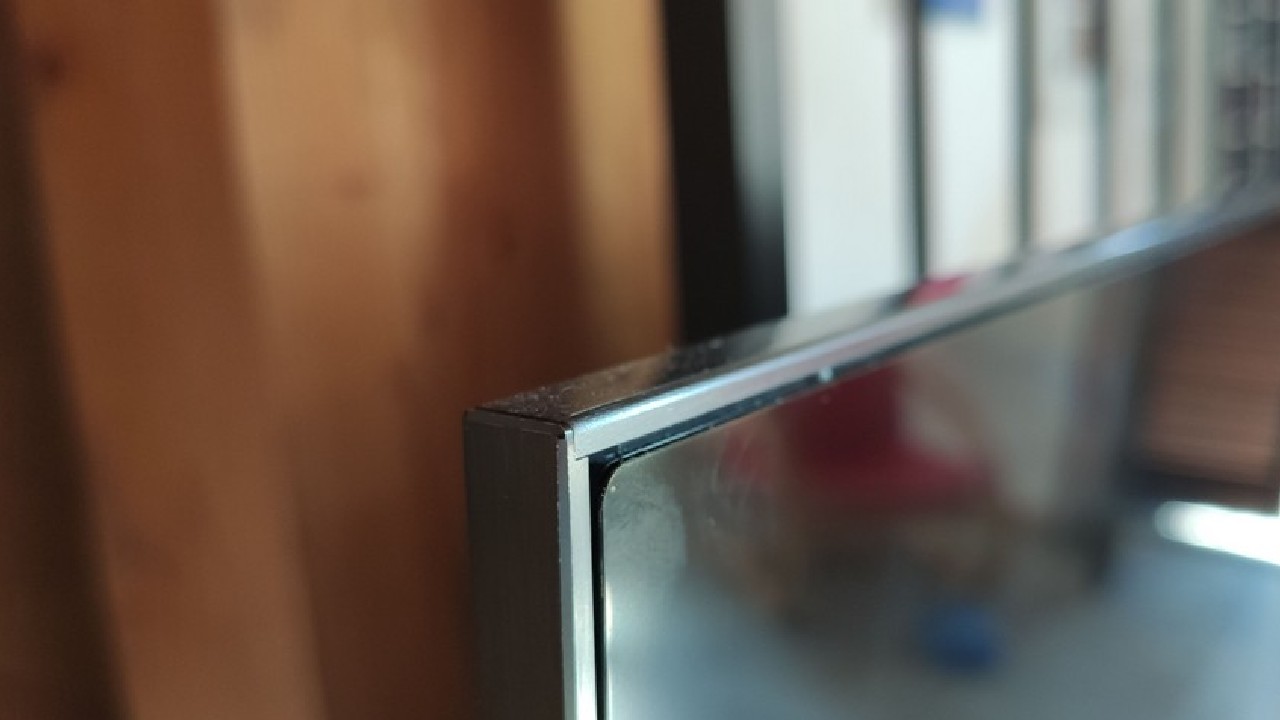
Dolby Vision playback does see the TV providing Dark and Light modes, but the dark option still doesn’t remove the clouding.
There is some good news regarding the C81 QLED’s handling of dark scenes. For starters, like Sony’s latest LCD TVs, the set opts not to compromise the intensity of bright elements of mostly dark HDR images. Had it done so, the clouding might well have been reduced; but so would the surprising (for such an affordable big-screen TV) sense of HDR intensity and contrast.
The C81 QLED’s bright approach also helps it retain plenty of shadow detail for the most part (with SDR as well as HDR images), except in instances that the clouding is severe enough to obscure a few things.
It’s worth stressing, too, that as is usual with backlight clouding or black-level problems, the issues tend to be far less noticeable if there’s a degree of ambient light in the room.
The C81 QLED achieves a surprising amount of punch with HDR from its 539-nit peak light output. Sunny daylight sequences in 4K Blu-rays display with substantially more brightness and luminance than they do with their HD, SDR equivalents. They’re not as daylight-like as they are on premium HDR TVs, of course, but there’s definitely some HDR impact.
The Micro Dimming feature manages to inject a little more contrast into regular or bright HDR images, too, although it can feel a bit forced if you go beyond its Low setting.
Also helping the C81 QLED's brightness is its unexpectedly intense colour performance. Saturations with wide colour gamut HDR material – The Greatest Showman 4K Blu-ray being a great example – reveals dramatically vibrant tones that go far beyond the capabilities of most, if not all, similarly priced 65-inch TVs.
You just aren’t supposed to be able to get the intense vibrancy that the C81 QLED is capable of for so little money. But unless you’re watching a Dolby Vision or HDR10+ source, there’s a problem…
With normal HDR10 feeds, which don’t join HDR10+ and Dolby Vision in carrying extra scene-by-scene image data to help the TV make the best of the images it’s receiving, the C81 QLED's picture lapses into very bright, heavily saturated images. Bright highlights can ‘flare out’ aggressively, losing lots of subtle shading and details, and colours can become bizarrely cartoonish. Skin tones start to look like they’re hand-painted, like a colourised black-and-white film, while the brightest colours look like blobs of acrylic paint rather than natural parts of a 4K HDR image. Tonal subtleties are almost completely gone.
The problem is all the more exaggerated by the way images tend to look fine – really good, even – during darker scenes.
Feed the C81 QLED an HDR10+ or Dolby Vision source, however, and the colour performance is instantly transformed. Suddenly, colours look consistently believable and actually more nuanced than you’d see at this price point, while still looking punchy. Areas of peak brightness in Dolby Vision pictures – such as the gleam of sun on metal, streetlights against a dark sky or fairground lights – all have a palpable HDR glint in their eye, without looking forced.
This suggests that the C81 QLED’s problems with standard HDR10 are down to its internal tone mapping – the processing it uses to ‘map’ HDR’s potential to the screen’s actual capabilities. While it’s unfortunate that the TV’s initial picture presets pump out unrealistic levels of brightness and colour with HDR10 sources that go far beyond what the screen can actually handle, there are things you can do to salvage the situation.
The two best presets to tweak are the Movie and Low Power modes. In Movie mode, I’d suggest setting Micro Dimming to Low; Dynamic Contrast and Black Stretch to Off; Color Temperature to Normal (the default Warm doesn’t sit comfortably with the C81 QLED’s colour approach); sharpness nudged up to 10; noise reduction and ‘gradation clear’ off; and Blur and judder reduction set to around 2 each.
For a touch more richness and colour punch, go for the Low Power mode with Brightness set to 82; colour saturation to 37; colour temperature to normal; Dynamic Contrast to Off; Micro Dimming to low; and contrast reduced to 94. There will still be a few flare-outs with these settings – but, arguably, they’re rare enough to be tolerable in return for the dramatic vibrancy of the pictures. To remove all flaring glitches with this setting you’ll need to bring brightness down to a point where the set is only outputting around 400 nits – which is more in line with the brightness levels on offer by similarly priced rivals.
One last picture area that again throws up mixed results is sharpness. The screen’s baseline sharpness and detailing with native 4K content is excellent. There’s never any doubt with fairly static images that you’re getting a full-blooded 4K experience.
On the downside, the sharpness can be impacted when there’s lots of motion in the frame. TCL has provided a decently flexible motion processing system, but using this to get a balance between reducing judder and removing blur without introducing too many unwanted digital side effects isn’t easy. Your best bet is to set both of the judder and blur processing elements to around their three levels. This will keep processing artefacts at bay, but you’ll still spot a little softness during camera pans, and the occasional panning stutter.
Don’t forget the Clear LED black frame insertion option if you’re OK with the quite dramatic drop in brightness.
One final oddity is that there’s clearly some motion processing in play while using Dolby Vision. The picture looks too smooth to be native 24p playback, and there’s some smeary haloing around moving objects. Yet the judder and blur motion processing settings are both set to zero. Very strange.
When it comes to upscaling HD sources to 4K, the C81 QLED delivers pretty solid results. Noise is gently massaged away without leaving the picture looking processed, although the results look more like good HD than 4K.
TCL also provides a Smart HDR feature for converting SDR to HDR. This isn’t perfect: skin tones, in particular, tend to take on rather unnatural yellow, green or orange tones. It also brings the backlight clouding into play much more than non-converted SDR. However, there’s no doubt that the Smart HDR feature greatly expands the image’s contrast, brightness and colour saturation. So while purists will avoid it, I can envisage many ‘regular’ viewers sticking with it – especially in a bright room.
Final picture performance bits and bobs to take note of include limited viewing angles before colour and contrast drop away, pleasingly little colour banding with HDR, and a very respectable 16.2ms input lag when using the C81 QLED’s Game mode. Note that the default Game mode is very susceptible to the brightness flaring problem, meaning you’ll need to calm the brightness and colour settings. It can also look rather juddery – and you can’t apply motion processing without input lag increasing.
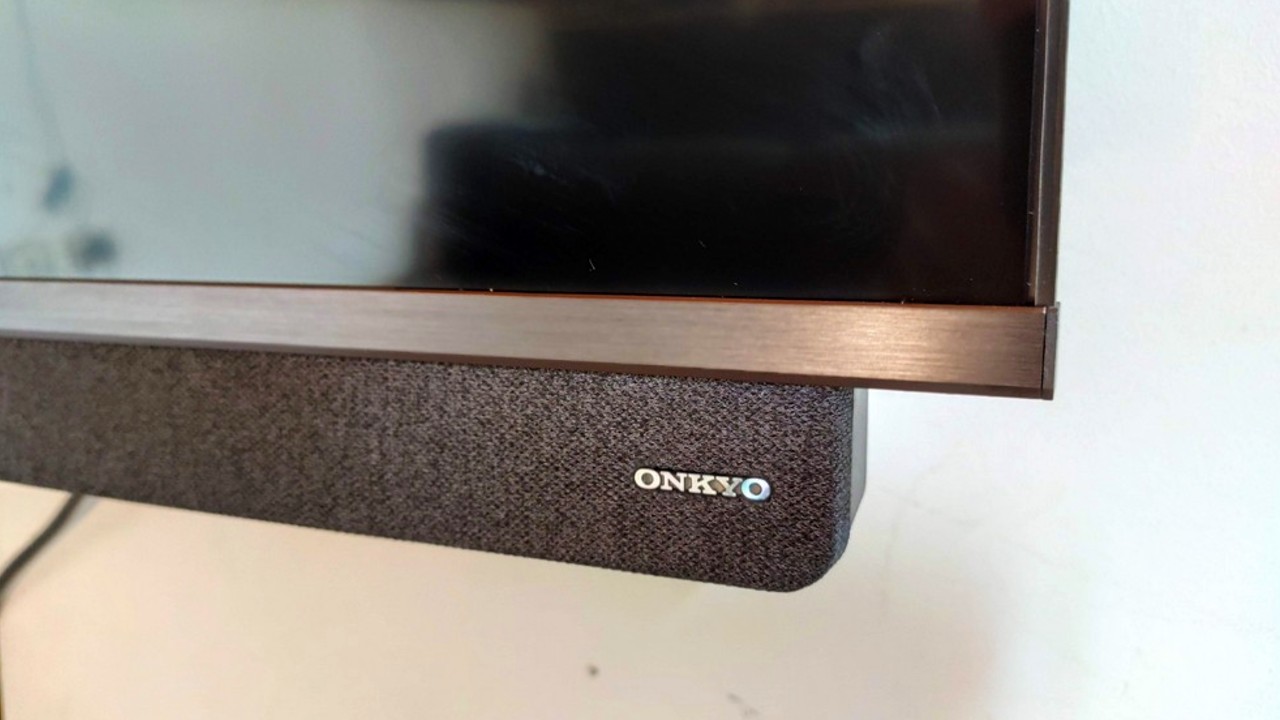
Audio performance
The C81 QLED’s sound is mostly impressive for such an affordable TV. The soundbar delivers a large soundstage with a genuine sense of verticality that sits well with the TV’s built-in Dolby Atmos decoding. This doesn’t mean you actually hear overhead effects, but you do get a wall of sound that at least feels as tall as the TV.
Voices can on occasion sound as if they’re coming from slightly below the picture rather than from where mouths are moving onscreen, but dialogue sounds clear, clean, distinct and nicely contextualised.
None of the soundbar’s output appears ‘boxed in’ or fragile, with sound moving aggressively forward into the room, giving it plenty of impact. Detailing is good, too, and the main speakers never break down into distortion or harshness.
The rear-mounted subwoofer can become a little buzzy under pressure, and it doesn’t deliver rumbles as deep as I’d hoped considering its size. The C81 QLED’s dynamic range is still a cut above the affordable TV norm, however.
On occasion, I experienced minor lip-sync issues when listening to Dolby Atmos, but most external Dolby Atmos sources, at least, provide audio-delay tools that should resolve such issues.
Should I buy the TCL C81 QLED TV?
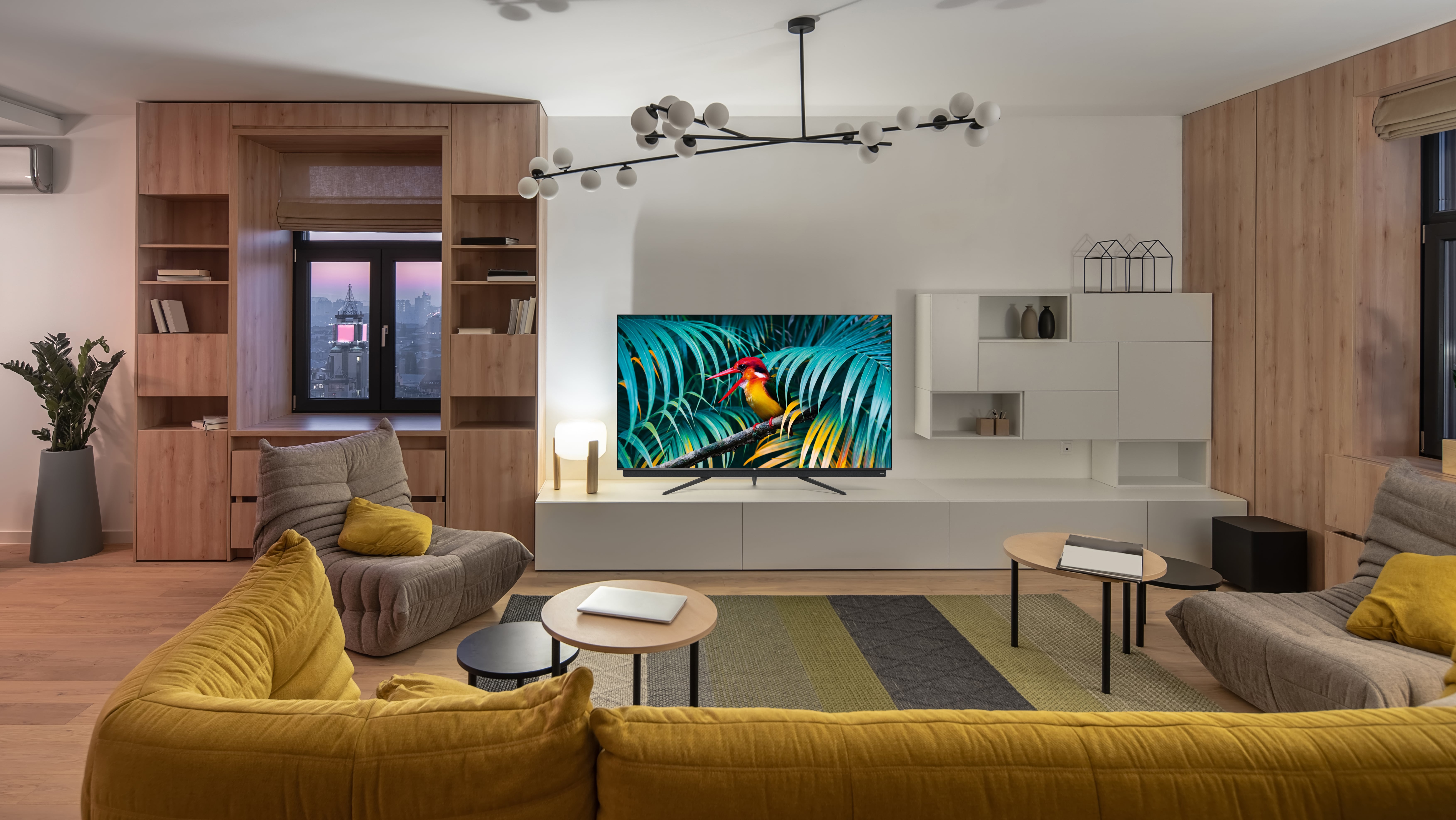
Buy it if...
You want plenty of bang for your buck
The C81 QLED’s combination of a huge screen, full Android TV system, built-in Dolby Atmos audio system and colour-rich QLED pictures makes its £849/AUS$1,999/1,199 Euro price worthwhile.
You want a built-in Dolby Atmos sound system
The C81 QLED’s integrated soundbar delivers superior sound to that of most similarly affordable big-screen TVs, and even gets some value out of its built-in Dolby Atmos decoding.
You have a bright room
While its brightness and vibrancy comes with strings attached, the C81 QLED does a better job than many rivals of delivering satisfyingly intense HDR pictures even in bright rooms.
Don’t buy it if…
You’re not prepared to spend some time setting it up
With HDR, at least, the C81 QLED’s picture presets aren’t helpful. You’ll need to make some manual tweaks to rein in the set’s initial ‘over-enthusiasm’.
You have to watch from an angle
Since the C81 QLED uses a standard VA LCD panel, pictures lose contrast and colour if viewed from much of an angle.
You want the latest cutting-edge video game features
There’s no support for the variable refresh rates, automatic game mode switching or 4K at 120Hz features of the latest consoles and PCs. Although this is to be expected at the C81 QLED’s price.
- What are the best TVs you can buy?
John has been writing about home entertainment technology for more than two decades - an especially impressive feat considering he still claims to only be 35 years old (yeah, right). In that time he’s reviewed hundreds if not thousands of TVs, projectors and speakers, and spent frankly far too long sitting by himself in a dark room.
